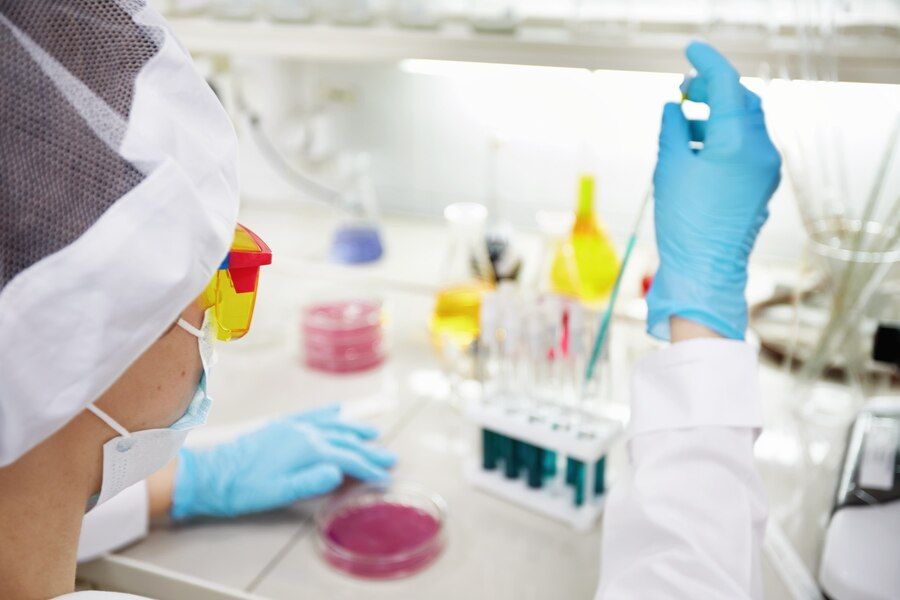contact@monad.com.cn
WhatsApp: +86-13967172554

Contact Us
Why Is Gas Chromatography Better Than Paper?——Let’s Find Out
This blog aims to demystify two prominent chromatographic methods: paper chromatography and gas chromatography. So, let's embark on a journey to understand what these techniques are, how they work, and explore the nuances that set them apart.
 What is Paper Chromatography and How Does It Work?
What is Paper Chromatography and How Does It Work?
Paper chromatography is a classic yet robust separation technique widely employed in laboratories. This method is particularly adept at separating mixtures into their individual components based on their differential migration rates through a paper matrix.
Here's how it works: a small amount of the sample is applied near one end of a strip of specialized paper, known as the stationary phase. The other end of the paper is dipped in a solvent, the mobile phase, which then ascends through the paper via capillary action. As the solvent moves, it carries the sample components along with it. The various components, owing to their differing affinities for the stationary and mobile phases, separate into distinct bands on the paper. The result is a visually striking chromatogram, showcasing the individual components of the mixture.
What is Gas Chromatography and How Does It Work?
Gas chromatography (GC), on the other hand, operates on a different principle, relying on the interaction between a sample and a gaseous mobile phase. This technique is particularly effective for volatile and semi-volatile compounds.
The process begins with injecting a small sample into a heated injection port, where it vaporizes into the carrier gas (commonly helium). This gas carries the vaporized sample into a chromatographic column, which is typically coated with a stationary phase. The separation occurs as different components of the sample interact differently with the stationary phase. The time taken for each component to travel through the column and reach the detector produces a chromatogram, revealing the composition of the sample.
Difference Between Gas Chromatography and Paper Chromatography
Now that we've delved into the basics of both techniques, let's explore the key difference between gas chromatography and paper chromatography.
1. Principle of Separation:
- Paper Chromatography: Based on differential migration rates through a paper matrix.
- Gas Chromatography: Relies on the differential interaction of sample components with a stationary phase in a gas.
2. Mobile Phase:
- Paper Chromatography: Uses a liquid solvent as the mobile phase.
- Gas Chromatography: Employs a gaseous mobile phase (typically helium).
3. Sample Types:
- Paper Chromatography: Suited for liquid samples and compounds with lower volatility.
- Gas Chromatography: Ideal for volatile and semi-volatile compounds.
4. Separation Speed:
- Paper Chromatography: Generally slower.
- Gas Chromatography: Rapid separation due to the gaseous mobile phase.
Similarities Between Paper and Gas Chromatography
Despite their differences, these chromatographic techniques share common ground:
1. Separation Principle:
- Both methods operate on the fundamental principle of separating components based on their interactions with the stationary and mobile phases.
2. Visualization:
- Both yield chromatograms that provide a visual representation of the separated components.
 Advantages of Gas Chromatography Compared with Paper Chromatography
Advantages of Gas Chromatography Compared with Paper Chromatography
As we weigh the merits of these techniques, gas chromatography emerges with distinct advantages:
- Sensitivity: GC is highly sensitive, making it effective for trace-level analysis.
- Resolution: The gas phase allows for efficient separation, leading to higher resolution in the chromatogram.
- Quantitative Analysis: Gas chromatography is well-suited for quantitative analysis due to its precise and reproducible results.
- Wide Applicability: GC is versatile, accommodating a broad range of sample types and providing excellent results for various compounds.
Introducing Monad: Elevating Your Chromatography Experience
In the pursuit of precision and reliability in chromatography, Monad stands as a beacon of excellence. Here are some reasons why you should choose Monad:
- Innovation: We continually invest in research and development to bring forth innovative chromatography solutions.
- Quality Assurance: Our products undergo rigorous quality checks to ensure accuracy, reliability, and performance excellence.
- Comprehensive Range: From state-of-the-art gas chromatographs to precision-engineered paper chromatography supplies, our comprehensive range caters to diverse analytical needs.
- Customer-Centric Approach: At Monad, we prioritize your satisfaction. Our team is dedicated to providing unmatched customer support and ensuring your chromatography needs are met with utmost precision.
Conclusion
As we wrap up our exploration of paper chromatography and gas chromatography, the choice between these techniques ultimately depends on the specific analytical goals and the nature of the samples at hand. Both have their strengths, and the decision may be influenced by factors such as sensitivity requirements, sample volatility, and the need for quantitative precision. At Monad, we believe in empowering your chromatographic journey with top-tier equipment and consumables. Whether you opt for the simplicity of paper chromatography or the precision of gas chromatography, rest assured that Monad is here to support and enhance your scientific endeavors.
